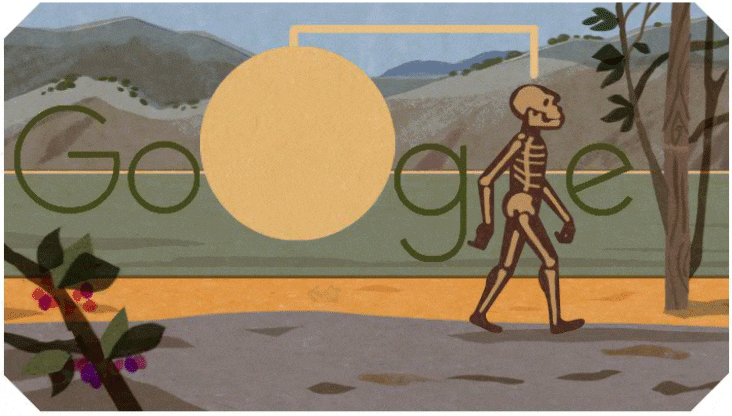Hello ladies and gents this is the Viking telling you that today we are talking about
Celebrating the Turkana human
When fossil hunters spotted a tiny skull fragment in Kenya’s Lake Turkana Basin on this day in 1984, they didn’t yet know they had discovered part of the most intact early hominid skeleton ever found. Today’s Doodle recognizes the discovery of this ancient fossil, dubbed the “Turkana Human,” which revolutionized knowledge of human evolution.
This excavation dates back to 1967, when a paleoanthropologist flew over the Lake Turkana Basin and noticed fossiliferous rock. The next year, an expedition was launched into the volcanic valley, where the team uncovered remains of three coexisting Homo species, revealing the first evidence suggesting that early humans didn't have a single lineage, but multiple. This paradigm-shifting theory was reinforced by the discovery of the Turkana specimen, which Leakey’s team classified as Homo erectus, now considered the earliest ancestor of modern humans.
Widely believed to be around 10 in age, the Turkana hominid lived approximately 1.6 million years ago. The skeleton exhibits anatomical characteristics that are similar to those of Homo sapiens from the neck down and reveals a body designed for bipedalism. The preserved facial features are smaller than those of pre-erectus ancestors, which indicates the consumption of a higher-quality diet to sustain a large brain, though not quite the size of the modern human brain. The era’s fossil record indicates that Homo erectus utilized this growing brain by building fires, crafting tools, and traveling outside of Africa—a migration that marked a new chapter in the journey of ancient humans.
From harnessing fire to elucidating the chronology of human evolution, who knows what human exploration will find next and as always have a chilled day from the Viking

Comments
Post a Comment